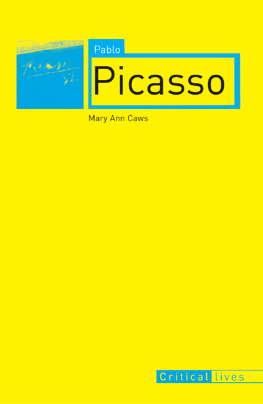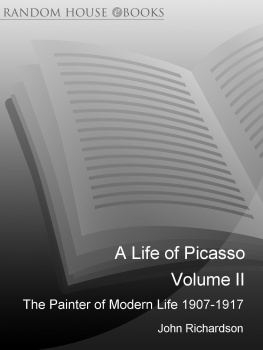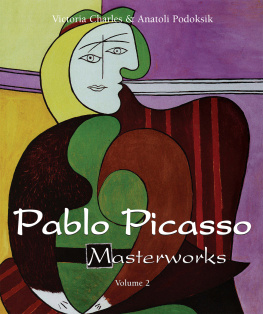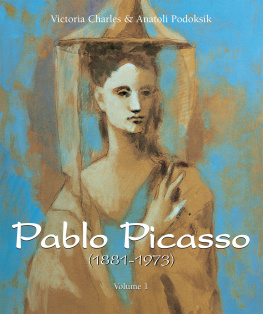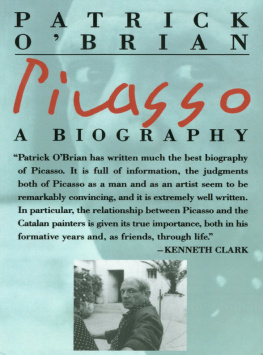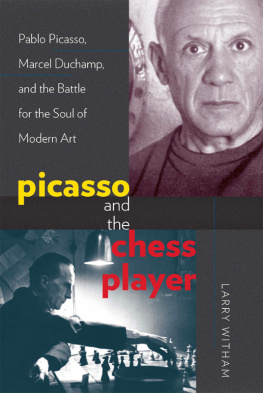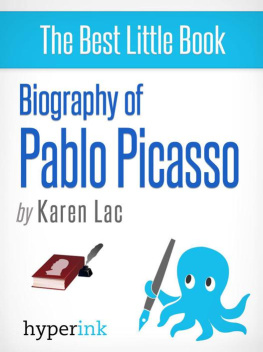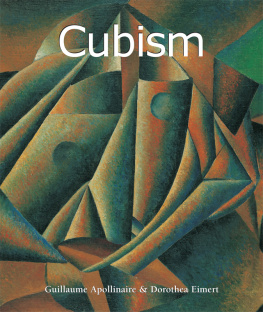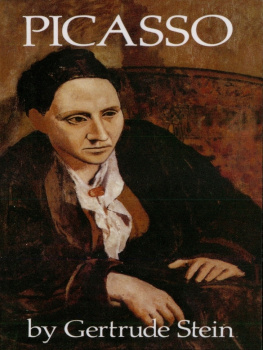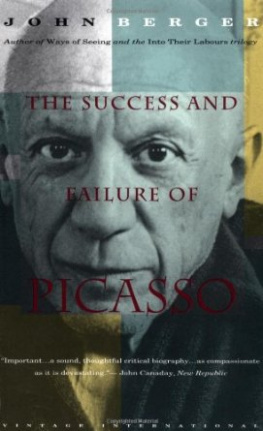Picasso Pablo - Pablo Picasso
Here you can read online Picasso Pablo - Pablo Picasso full text of the book (entire story) in english for free. Download pdf and epub, get meaning, cover and reviews about this ebook. City: Spanje;Spain, year: 2005, publisher: Reaktion Books, genre: Non-fiction. Description of the work, (preface) as well as reviews are available. Best literature library LitArk.com created for fans of good reading and offers a wide selection of genres:
Romance novel
Science fiction
Adventure
Detective
Science
History
Home and family
Prose
Art
Politics
Computer
Non-fiction
Religion
Business
Children
Humor
Choose a favorite category and find really read worthwhile books. Enjoy immersion in the world of imagination, feel the emotions of the characters or learn something new for yourself, make an fascinating discovery.
- Book:Pablo Picasso
- Author:
- Publisher:Reaktion Books
- Genre:
- Year:2005
- City:Spanje;Spain
- Rating:5 / 5
- Favourites:Add to favourites
- Your mark:
- 100
- 1
- 2
- 3
- 4
- 5
Pablo Picasso: summary, description and annotation
We offer to read an annotation, description, summary or preface (depends on what the author of the book "Pablo Picasso" wrote himself). If you haven't found the necessary information about the book — write in the comments, we will try to find it.
Pablo Picasso — read online for free the complete book (whole text) full work
Below is the text of the book, divided by pages. System saving the place of the last page read, allows you to conveniently read the book "Pablo Picasso" online for free, without having to search again every time where you left off. Put a bookmark, and you can go to the page where you finished reading at any time.
Font size:
Interval:
Bookmark:


Titles in the series Critical Lives present the work of leading cultural figures of the modern period. Each book explores the life of the artist, writer, philosopher or architect in question and relates it to their major works.
In the same series
Michel Foucault
David Macey
Jean Genet
Stephen Barber
Frank Kafka
Sander S. Gilman
Mary Ann Caws
REAKTION BOOKS
Published by Reaktion Books Ltd
33 Great Sutton Street
London EC1V 0DX, UK
www.reaktionbooks.co.uk
First published 2005
Introduction copyright Arthur C. Danto 2005
Main text copyright Mary Ann Caws 2005
All rights reserved
No part of this publication may be reproduced, stored in a retrieval system, or transmitted, in any form or by any means, electronic, mechanical, photocopying, recording or otherwise, without the prior permission of the publishers.
Page references in the Photo Acknowledgements and
Index match the printed edition of this book.
Printed and bound by Biddles Ltd, Kingss Lynn
British Library Cataloguing in Publication Data
Caws, Mary Ann
Pablo Picasso. (Critical lives)
1. Picasso, Pablo, 18811973 2. Painters Spain Biography
I. Title II. Picasso, Pablo, 18811973
759.6
eISBN: 9781780232430
Arthur C. Danto
The lives of heroes can take the form of chronicles of high deeds of the memorable victories and the great overcomings, and, of course, if the hero is tragic, of defeat and death. If the heroes are artists, the available alternative form might be the retrospective exhibition, in which the great works the masterpieces define, like the profile of mountain ranges, the peaks and valleys of breakthrough and achievement, failures if there were failures, and recoveries. But neither form tells us much about the life of the hero as something lived what it was like to have been him or her. Heroes are human, after all, or, to use Nietzsches phrase, human, all too human: composites of body and soul, with needs and dependencies: parents and siblings, teachers and mentors, friends and enemies, lovers and rivals, children, doctors and retainers, even horses and dogs. We can imagine a life told through the medium of habitations birthplaces and resting-places, and the gazetteer of countries and cities that left their marks on the heros evolving soul. Picassos biography, ideally, is a library of each kind of volume where he lived, when and with whom, as well as all the sketches and masterworks, the influences upon him and his impacts on others, and the differences it made that he lived and created what he did when he did it. It is hard to imagine a nutshell format, in which it can all be told at once. A volume of misperceptions can tell us as much as one consisting only of the truth and nothing but the truth.
Mary Ann Caws has wisely chosen the format of the bande Picasso the group of copains that formed the Picasso circle early on, which for that reason differs from the gallery of his women, who replaced and succeeded one another, and could not have formed a company, since they came on the scene at different stages of the artists life, bringing into it different families and, as women will, different styles of life. I say wisely, for the hero with his band already has the aura of a myth of King Arthur and his knights, Robin Hood and his Merry Men, Socrates and disciples. What is striking is that the bande Picasso had no painters in it, as well as no women, though painters and women were certainly part of Picassos life at every stage. The band was made of up of poets, the studio in the legendarily rickety architecture the Bateau-Lavoir on Montmartre was a gathering place for poets, and said as much on its door. Picasso and his art were their subject as well as their criterion, and it is fair to say that Picasso and their relationship to him was the substance of their life as thinkers and writers. They were Max Jacob, Andr Salmon and Guillaume Apollinaire, although others came and went. One can think of the life on the model of an opera, with Picasso as hero surrounded by a chorus of poets. The setting is a studio. Paintings lean against the walls. The company eats a frugal repast in front of Les Demoiselles dAvignon. A dog sleeps under the improvised table. Fernande Olivier sleeps under Moroccan blankets. As the opera plays itself out, the scene changes. In Act II, perhaps, Guernica has replaced the Demoiselles, Dora Maar has replaced Fernande, Cocteau has joined the chorus, Picasso is bald, there is a new dog. But the form of life is essentially unaltered. The Bateau-Lavoir was the default condition of Picassos life, the place, as he later acknowledged, where he was happy, the place, finally, where he was Picasso.
Cawss operatic choice, as I think of it, was astute, for it enables her to bring into the discussion her unmatched knowledge of French poetry and literary movements. And it makes evident for the readerhow, more than the life of any major artist of modern times, Picassos was a life of literature. In addition to the poets of the Bateau-Lavoir, there were Blaise Cendrars and Gertrude Stein, Ren Char and Andr Breton. Nothing remotely like this was true of Picassos only true peer as a painter, Henri Matisse. Bloomsbury was a mix of painters and writers, but not even Virginia Woolf was the solar centre of others, following their own orbits. The New York Poets formed a circle around Fairfield Porter, who lacked a heroic dimension. In the end, the chorus defined the hero in the operatic life of Picasso, and Mary Ann Caws has written its protolibretto. It is a life of the artist unlike any other.
The important thing is to do, and nothing else; be what it may.
Rather than giving an already familiar and extensive recounting of the places and people in the famous life of Picasso, this brief study will concentrate on a few of its high points, as the present writer sees them. Instead of chronicling in detail, as the standard biographies do, his changes of locations for living and painting, his paintings in their chronological order, and the names and dates of his exhibitions, gallery showings and sales, it will take up those topics as they feel appropriate to the text, and expand upon only those that seem relevant to my focus.
For in particular I want to stress Picassos all-important relationships with his close friends. It seems to me that in looking at these from closer up than can usually be the case in standard biographies, we are now able, in the twenty-first century, to gain a slightly different view of this monumental figure of the twentieth century.
Both lauded and criticized for his changing styles a nomad within his own paintings Pablo Picasso was from the beginning a self-aware performer, and not an especially modest one. God has no style, said he. So why should Picasso? Yo soy el rey, we read under an early self-portrait. I am the king. Or, more simply, Yo, Picasso. That says it all, and justifies at least from Picassos point of view, which is, after all, not an entirely misplaced one his shifting styles, the subject of so much discussion. His juggling of viewpoints,artistic strategies, loves and friends can be seen as part of the inevitable expansion of his genius and his personality. Admired, envied and no less detested for his feats, he exemplifies a certain brilliant modernist personality magnified into an iconic being and model with all his contradictory tendencies: his unusual generosity in friendship on the one hand, and, on the other, a manifest cruelty, at the opposite pole from his tenderness.
Font size:
Interval:
Bookmark:
Similar books «Pablo Picasso»
Look at similar books to Pablo Picasso. We have selected literature similar in name and meaning in the hope of providing readers with more options to find new, interesting, not yet read works.
Discussion, reviews of the book Pablo Picasso and just readers' own opinions. Leave your comments, write what you think about the work, its meaning or the main characters. Specify what exactly you liked and what you didn't like, and why you think so.

